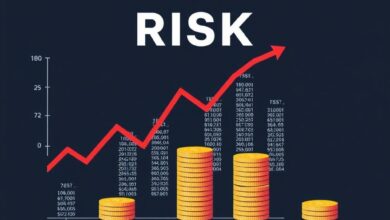What are stablecoins and are they a safe investment?

Consider integrating stable digital assets like USDT into your portfolio for enhanced stability amidst market volatility. These currencies are pegged to traditional fiat, such as the US dollar, providing a shield against unpredictable price swings commonly found in cryptocurrencies.
The appeal of a digital dollar lies in its ability to maintain value while facilitating transactions within the crypto ecosystem. By holding USDT, investors can swiftly move funds without incurring heavy losses due to drastic fluctuations. This characteristic makes it a practical choice for both seasoned traders and newcomers seeking refuge from instability.
Investors should also be aware of the backing mechanisms behind these currencies. A well-structured reserve system ensures that every token is supported by actual dollars, reinforcing trust and reliability. As you explore options in the crypto space, prioritize those with transparent operations and robust regulatory compliance to safeguard your investments.
Types of Stablecoins Explained
Asset-backed coins provide a reliable option for those seeking a digital dollar equivalent. These tokens are directly linked to physical assets, such as commodities or fiat currencies. USDT is the most recognized among them, offering stability through reserves that back each issued token with actual currency held in bank accounts.
Algorithmic stablecoins utilize smart contracts to maintain their value. Instead of being pegged to traditional assets, they employ algorithms to automatically adjust supply based on market demand. This dynamic approach aims to ensure price stability while promoting efficiency in decentralized finance (DeFi) applications.
Fiat-collateralized variants offer an ideal balance between security and liquidity. They are typically managed by trusted organizations that hold corresponding fiat reserves, ensuring that every issued coin can be redeemed at any moment for its equivalent in local currency. This method fosters confidence among users who prioritize safety in volatile markets.
Crypto-collateralized options leverage other cryptocurrencies as collateral. They often involve over-collateralization to absorb potential volatility spikes, making them suitable for risk-tolerant investors aiming for exposure beyond traditional finance while still enjoying some level of stability.
In exploring these types, consider your risk appetite and investment goals. For those looking to integrate into DeFi ecosystems without sacrificing value retention, selecting the right type of stablecoin is paramount for achieving financial objectives effectively.
Assessing Risks in Investments
Prioritize thorough research before allocating funds into any digital assets. The crypto market presents unique challenges that require careful evaluation of potential pitfalls.
- Volatility: Despite the notion of stability, fluctuations in value can impact your holdings. Monitor price movements regularly.
- Regulatory Environment: Stay informed about changing regulations regarding cryptocurrencies. Legal shifts can affect asset viability.
- Liquidity Risk: Ensure that the chosen asset has sufficient trading volume. Low liquidity may hinder the ability to sell at desired prices.
- Counterparty Risk: When dealing with platforms or issuers like USDT, assess their reputation and security measures to mitigate default chances.
- Technological Vulnerabilities: Be aware of potential hacks or breaches affecting digital wallets and exchanges. Use well-established services with robust security protocols.
A diversified portfolio can cushion against unexpected downturns. Consider including various types of crypto assets alongside stable options like a digital dollar to balance risk exposure.
- Diversification: Mix traditional assets with cryptocurrencies for a balanced approach.
- Regular Review: Periodically reassess your investments to adapt strategies based on market conditions.
- Risk Tolerance Assessment: Understand your capacity for loss and adjust investment levels accordingly.
The journey through cryptocurrency investments requires vigilance and adaptability. Protect capital by adopting a proactive stance on risk management while exploring opportunities within this dynamic space.
Regulatory Framework Overview
To ensure safety in crypto investments, familiarize yourself with the regulatory landscape surrounding digital assets, particularly those pegged to fiat currencies like the digital dollar. Authorities worldwide are increasingly scrutinizing these assets to establish clear guidelines that protect investors while fostering innovation.
The U.S. has made significant strides with proposed regulations focusing on transparency and consumer protection. The Commodity Futures Trading Commission (CFTC) and the Securities and Exchange Commission (SEC) play pivotal roles in overseeing transactions involving USDT and other similar tokens. Compliance with KYC (Know Your Customer) and AML (Anti-Money Laundering) regulations is becoming standard practice among platforms dealing with stablecoins.
Internationally, jurisdictions vary widely; some countries adopt a proactive stance, creating comprehensive frameworks for decentralized finance (DeFi), while others remain hesitant or impose strict limitations. Understanding these differences can enhance your strategy when considering investments in stable assets.
Investors should stay informed about upcoming legislation and regulatory changes that may impact market stability. Engaging with reliable sources of information will aid in making well-informed decisions amidst the evolving framework governing this asset class.
Best Practices for Investors
Prioritize due diligence. Thoroughly research the projects behind cryptocurrencies like USDT, ensuring they maintain adequate reserves and transparency in operations.
Diversify your portfolio. Relying solely on a single asset can expose you to unnecessary risks. Include a mix of stablecoins and other crypto assets to balance potential volatility.
Monitor regulatory changes. Keep abreast of developments in regulations affecting decentralized finance (DeFi) as these can impact the stability and usability of various coins.
Utilize secure wallets. Store assets in reputable wallets that offer robust security features, reducing exposure to hacks and theft common in the crypto space.
Engage with community insights. Participate in forums and groups discussing trends and experiences related to stablecoins, gaining valuable perspectives from fellow investors.
Adopt a cautious approach during market fluctuations. When prices exhibit extreme volatility, reassess your positions instead of making impulsive decisions driven by fear or greed.
Consider using automated trading tools cautiously. While they can enhance efficiency, ensure that their algorithms align with your investment strategy and risk tolerance.
Stay informed about liquidity pools in DeFi platforms where stablecoins are utilized. Understanding how these pools operate can provide insights into potential returns and risks associated with them.
Create a clear exit strategy. Define criteria for when to sell or convert holdings, helping mitigate losses during downturns without emotional interference.
Evaluate transaction fees regularly. Different platforms may have varying costs associated with trading or transferring stablecoins; factor this into your overall investment strategy.







